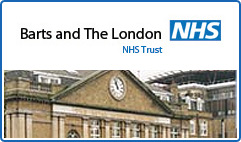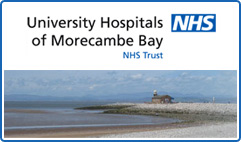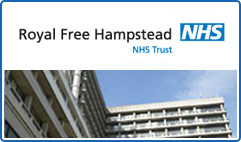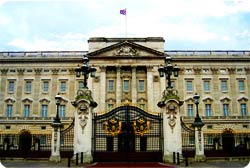That was the year that was…
- 28 December 2008

2008 was the year of two halves – the months before the housing market and the banking sector collapsed, and the months after the ‘credit crunch’ hit. As early signs of trouble emerged, the NHS could at least look forward to its 60th anniversary, which was marked with another ten year vision for its future and a new constitution.
July also saw the publication of a Health Informatics Review that introduced the idea of “strategic” and “interim” systems. With the wait for strategic care records systems getting ever longer, the need for alternatives grew more pressing as the year went on.
Much of 2008 was spent waiting for the first acute deployment of the Lorenzo strategic CRS. Promised in the spring, it finally went live on one ward at Barrow General Hospital in November. Some London trusts may be wishing they were still waiting for Millennium.
Security stayed high on the agenda throughout 2008; while providing more information for the public and patients rose up it and green issues may have crept onto it. The credit crunch has yet to hit: but the Operating Framework for the NHS in England 2009-10 suggests that it certainly will next year.
 January: Gordon Brown delivers a New Year message to the NHS as it enters its 60th year. The health service is promised its first constitution and “a broadening and deepening of reform.”
January: Gordon Brown delivers a New Year message to the NHS as it enters its 60th year. The health service is promised its first constitution and “a broadening and deepening of reform.”
Conservative Party leader David Cameron delivers his own New Year message a day later, and calls for the National Programme for IT in the NHS to be dismantled in favour of “storage on local servers with interoperability between them.” The Liberal Democrats join in at the end of the month, with a paper claiming NPfIT has “pushed the NHS into disarray.”
HM Revenue and Customs’ loss of 25m child benefit claimant details (November 2007) continues to make waves. The House of Commons Justice Select Committee says the loss was “truly shocking” and deliberately or recklessly breaching data protection laws should become a crime. The deadline for re-setting Fujitsu’s contract as local service provider for the South expires.
 |
| Richard Granger |
February: It’s officially the end of an era as NHS Connecting for Health staff are told that director general of NHS IT Richard Granger has left the agency he has run for five years.
Matthew Swindells is appointed acting chief information officer at the Department of Health, while Gordon Hextall becomes acting head of programme and system delivery. Days later, it’s the sixth anniversary of the Number 10 seminar that led to the creation of the national programme.
The latest plans for deploying iSoft’s Lorenzo to the North, Midlands and East of England emerge in a strategic health authority paper that suggests the full benefits will not be seen until 2012. South Birmingham, Morecambe Bay and Bradford and Airedale are preparing to take Release One.
In London, two doctors go live with concerns about the Millennium care records system. Cerner responds that it has “met all testing and assurance requirements.” Six firms are shortlisted for the £80m NHS Choices contract as Google and Microsoft launch personal health portals in the US.
 March: It’s officially the start of a new era of “free choice” in the NHS. From the start of the financial year, patients can be treated at any hospital in the country, willing to work for the NHS tariff.
March: It’s officially the start of a new era of “free choice” in the NHS. From the start of the financial year, patients can be treated at any hospital in the country, willing to work for the NHS tariff.
A national healthcare IT project is completed when the Electronic Staff Record finishes its roll out across the health service – seven years after it was conceived and three years after it was originally scheduled.
But the Conservatives announce they will hold a review of NHS IT, as figures released by the Department of Health show the national programme has spent only half of the total planned in its first three years, because of delays to its key patient record systems.
Barts and the London NHS Trust postpones go-live of its Cerner Millennium system to iron out problems with reporting and integration with its legacy systems.
 April: Health minister Ben Bradshaw tells Parliament that Lorenzo and Millennium will be in NHS trusts by the “summer” – but confirms that deployment work in the South has stopped as Fujitsu and NHS Connecting for Health remain locked in contract talks.
April: Health minister Ben Bradshaw tells Parliament that Lorenzo and Millennium will be in NHS trusts by the “summer” – but confirms that deployment work in the South has stopped as Fujitsu and NHS Connecting for Health remain locked in contract talks.
Days later, Barts and the London becomes the third London trust to switch on a Cerner care records system supplied by local service provider, BT, which says there “some teething problems typical of an implementation of this kind”.
The Department of Health’s interim chief information officer, Matthew Swindells, quits for a job at Tribal Consulting, before the review of NHS informatics that he has been leading has been published. Sir Bruce Keogh takes over his job.
At Healthcare Computing, Mark Ferrar, NHS Connecting for Health’s director of infrastructure, says the gap between the trusts with the best infrastructure and those with the worst is growing. Back in London, the Information Commissioner and House of Lords add to calls for international or reckless data breaches to be criminalised.
 May: The House of Commons passes legislation giving the Information Commissioner’s Office new powers. McAfee wins an NHS Connecting for Health contract for port control and encryption in the health service.
May: The House of Commons passes legislation giving the Information Commissioner’s Office new powers. McAfee wins an NHS Connecting for Health contract for port control and encryption in the health service.
A team from University College London, led by Professor Patricia Greenhalgh, says CfH should move to a “consent to view” model for the NHS Summary Care Record.
CfH issues an Additional Supply Capability and Capacity catalogue with 61 framework contracts for patient administration, clinical systems and support. The National Audit Office then issues a report saying the delivery of electronic patient records by the National Programme for IT in the NHS is running four years late and is unlikely to be completed before 2015. It also describes the timeframe for deploying Lorenzo in the North, East and Midlands as “optimistic.”
Fujitsu’s £896m contract as local service provider for the South is terminated, following a final break down in its contract negotiations.
 June: Lord Darzi of Denham launches the final report of his year-long Next Stage Review of the NHS, promising a higher quality service driven by more choice for patients underpinned by staff and patient portals such as NHS Choices.
June: Lord Darzi of Denham launches the final report of his year-long Next Stage Review of the NHS, promising a higher quality service driven by more choice for patients underpinned by staff and patient portals such as NHS Choices.
There are signs that foundation trusts may be willing to walk away from the National Programme for IT in the NHS when Royal Berkshire NHS Foundation Trust threatens to go, saying work in the South has ground to a halt.
In London, chief information officer Kevin Jarrold pledges to have 15 acute care records systems installed by the end of the financial year. Royal Free Hampstead NHS Trust becomes the first in the capital to go live with a Cerner Millennium London Release One system, and says it is “proceeding well.” But University Hospitals of Morecambe Bay NHS Trust duly fails to go live with Lorenzo.
 July: The NHS celebrates its 60th anniversary on July 5 and plans for a constitution are duly published. Five days later, the Health Informatics Review is finally published and brings two new concepts into widespread use; the “strategic” solution and the “interim” solution. The NHS is still committed to the strategic solutions to be delivered by NPfIT, but interim solutions may be needed as they are four years late.
July: The NHS celebrates its 60th anniversary on July 5 and plans for a constitution are duly published. Five days later, the Health Informatics Review is finally published and brings two new concepts into widespread use; the “strategic” solution and the “interim” solution. The NHS is still committed to the strategic solutions to be delivered by NPfIT, but interim solutions may be needed as they are four years late.
Meanwhile, the Cabinet Office publishes a strategy for Greener Government IT, to help the public sector meet carbon reduction targets.
Documents obtained by E-Health Insider under the Freedom of Information Act show that implementation of a Cerner Millennium system in Milton Keynes caused “near melt-down.”
In a surprise move, the Department of Health announces that Capita is the preferred bidder for the revamped NHS Choices, ousting its developer, Dr Foster. And a new consent model is introduced for the NHS Summary Care Record, along the lines of that suggested by Patricia Greenhalgh in May.
 |
| Dr Glyn Hayes |
August: At the end of the month, the Conservatives announce that their review of NHS IT will be led by Dr Glyn Hayes, the former chair of the British Computer Society’s health informatics forum.
But the big news of the month is the appointment of new leaders for health informatics and the late, much criticised and much reviewed National Programme for IT in the NHS – Christine Connelly, the former chief information officer of Cadbury Schweppes, and Martin Bellamy, the chief information officer of the pension service. Gordon Hextall stays on as CfH’s chief operating officer.
Contradictory reports emerge about a future local service provider for the South. Initially, it looks as if BT and CSC may divide the region between them. As the summer goes on, it looks more and more likely that no LSP will be appointed.
Doctors react badly to a new website, I Want Great Care, which allows patients to rate their clinicians. The well-established website, Patient Opinion, announces a clever mash-up with NHS Choices.
 September: Richard Granger, the former director general of NHS IT, gets a new job with KPMG’s Global Health Practice in Australia. Christine Connelly and Martin Bellamy silently take up the posts created when he left NHS Connecting for Health.
September: Richard Granger, the former director general of NHS IT, gets a new job with KPMG’s Global Health Practice in Australia. Christine Connelly and Martin Bellamy silently take up the posts created when he left NHS Connecting for Health.
South Birmingham Primary Care Trust is able to announce that its podiatrists have become the first clinicians in the country to start using Lorenzo. University Hospitals of Morecambe Bay NHS Trust is reported to be in the “final stages” of preparation for its go live.
Meanwhile, CSC, the local service provider for the North, Midlands and East of England, announces that it will use InterSystems Ensemble for systems integration at the trusts it is working with.
CfH launches a public consultation on the Secondary Uses Service, run by Tribal Consulting, and the National Patient Safety Agency issues a notice mandating use of the NHS Number. At the Labour Party conference, Health Secretary Alan Johnson says he wants to see hospitals collecting patient views in “real time.”
 October: NHS chief executive David Nicholson sends out a “dear chief executive letter” asking managers to check they have implemented all the recommendations of the Cabinet Office’s Data Handling Review and NHS guidance on data protection. He reveals that 200 trusts have not taken up McAfee’s encryption software.
October: NHS chief executive David Nicholson sends out a “dear chief executive letter” asking managers to check they have implemented all the recommendations of the Cabinet Office’s Data Handling Review and NHS guidance on data protection. He reveals that 200 trusts have not taken up McAfee’s encryption software.
The Healthcare Commission issues its annual health check, which reveals, as previous health checks have done, that a significant minority of trusts are not complying with “core standards” on record keeping. A week or so later, the Royal College of Physicians and NHS Connecting for Health issue the first standards for recording information in hospital records.
E-Health Insider learns that the “live eight” trusts in the South that deployed Cerner Millennium under Fujitsu will rely on the former local service provider for support until well into 2009.
Then, as EHI prepares for its Healthcare Interoperability event, a major row breaks out over whether the National Programme for IT in the NHS is “grinding to a halt”, fuelled by shadow health minister Stephen O’Brien.
 November: An E-Health Insider survey on device security, sponsored by Credant, suggests that the emphasis on information governance is bearing fruit, with most trusts revising their policies and some looking for solutions to enforce them.
November: An E-Health Insider survey on device security, sponsored by Credant, suggests that the emphasis on information governance is bearing fruit, with most trusts revising their policies and some looking for solutions to enforce them.
Further evidence of problems in London emerges when the Royal Free Hampstead NHS Trust says issues with its Cerner Millennium London Cluster Release One system have pushed it into a £7.2m deficit. Mid-month, another board paper reveals that a 90 day “rescue plan” is underway and further implementations are on hold.
Bart’s and the London NHS trust, which has put the cost of its Cerner implementation at £3m, is hit by another kind of computer problem, when the network serving its three hospitals is hit by the Mytob worm.
But as Bonfire Night rockets light up the sky, University Hospitals of Morecambe Bay NHS Trust is able to announce a “soft landing” for Lorenzo – which has gone live on one ward at Barrow General Hospital. NHS Connecting for Health says it is “very pleased.”
 December: The final month of 2008 is dominated by reports suggesting there will be no let up in NHS reform or debate about the future direction of NHS IT in 2009. The Queen’s Speech outlines plans for an NHS Reform Bill that will enshrine the NHS constitution in law and require further investment in information for patients.
December: The final month of 2008 is dominated by reports suggesting there will be no let up in NHS reform or debate about the future direction of NHS IT in 2009. The Queen’s Speech outlines plans for an NHS Reform Bill that will enshrine the NHS constitution in law and require further investment in information for patients.
Then the Operating Framework and its supporting Informatics Planning guidance outline a new structure for planning IT investments, based on local health communities. LHCs are told to plan for national projects and for getting new functionality into acute and community services, using both interim and strategic systems.
Yet two days later, NHS chief executive David Nicholson tells MPs that the National Programme for IT in the NHS is at a “pivot point” and “we cannot go on like this.”
E-Health Insider understands that new chief information officer for health, Christine Connelly, is planning to announce the outcome of a review of the programme in January; when NHSmail is due to move to the Microsoft Exchange platform.




